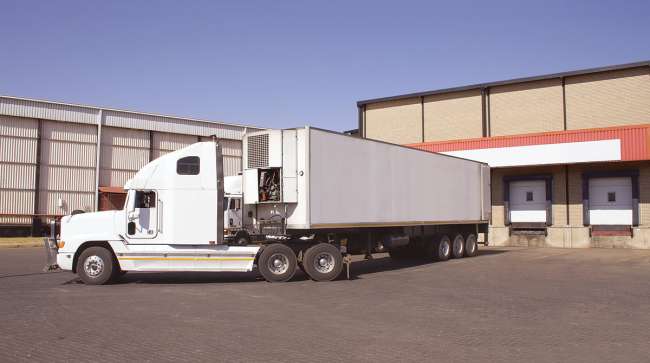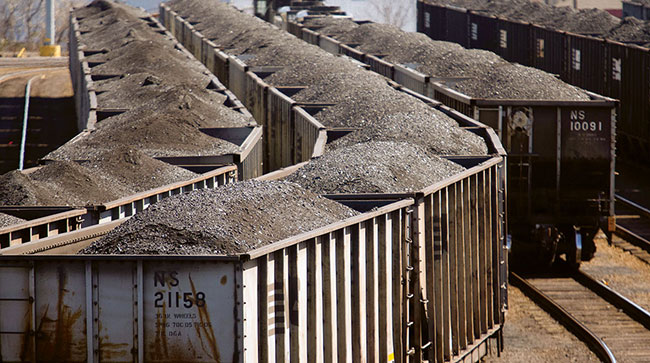Staff Reporter
Truckload Sector’s Q2 Slowdown Not Nearly as Bad as Feared

[Stay on top of transportation news: Get TTNews in your inbox.]
The truckload sector reported a strong second quarter, but there were signs that nearly two years of robust freight activity may be starting to slow.
“I think that there was a lot of trepidation around earnings,” said KeyBanc analyst Todd Fowler. “There was a big concern that second-quarter earnings were going to reflect this big downward shift in what we were seeing in spot rate activity, and the reality was that the second-quarter earnings were decent, maybe even a little bit better than expected.”
Fowler pointed out that the slowdown in spot market activity started happening around March. The expectation was that this would translate to a decline in overall freight activity starting in the second quarter, but that has yet to happen.

Railroads were far more positive on the outlook because of coal, agriculture, fertilizer and auto exposure. (Andrew Harrer/Bloomberg)
“I spoke to investors going into the quarter and I felt like there was some concern that rhetoric was going to get more negative and then ultimately guidance would come down,” Stifel analyst Bert Subin said. “You didn’t really see that. You saw guidance for the most part go up. You heard some rhetoric that sort of signaled that there’s more uncertainty around peak season and what will ultimately happen in later 3Q and into 4Q. I think the tone has generally been pretty conservative, but the numbers remain pretty good for 2022.”
Subin noted there is still concern over what will happen during bid season and whether contract terms will start to match the spot market. But that is something that won’t really be evident until early next year.
“But if you’re just thinking purely in terms of 2Q, I think it was a good quarter across the board for most of the carriers, excluding some one-time insurance items,” Subin said. “Guidance was generally still pretty favorable in the second half of the year.”
Cowen and Co. released a brief examining the trucking and railway sectors for the second quarter Aug. 10. It found the earnings season was fairly strong but some trucking companies pointed to cracks in the consumer and industrial sectors. Railroads were far more positive on the outlook because of coal, agriculture, fertilizer and auto exposure.
“The truckers, a lot of them talked about good demand in 2Q, but there were numerous calls that noted slowing,” Cowen analyst Jason Seidl said. “A lot of it was on the consumer end, so more retail stuff. But there was also some housing-related slowing, some traffic from the housing sector, and there were notes of seeing a slowdown on the industrial side.”
Seidl noted the railway sector is seeing its operations improve because it overcame issues that limited intermodal business in the first half of the year and because of a favorable commodity exposure. But he doesn’t see anything disastrous on the trucking side like a collapse.
“I think caution is definitely warranted as we sit here today,” Seidl said. “I don’t feel, at least in the third quarter here, we’re going to be falling off a cliff. I think we’re going to have weakness show up. But I think [the] question won’t be answered until we see some more stuff out of the macroeconomy.”
Seidl pointed out that inflation is at the highest point in decades and some companies have pared back. He believes the trucking industry is headed for some form of a decline next year. The big question that remains is how big and how long will it be.
“We were going to slow at some point,” Fowler said. “We were going at a hundred miles an hour for six or seven quarters and it’s just not a sustainable speed. And so, we downshifted to 75 miles an hour, which is a very good speed and that’s probably where we should be trending at.”
Fowler noted a lot of freight activity was probably inventory that was on order before more recent changes in the economic environment like higher inflation and geopolitical unrest. He noted freight activity could slow more if retailers adjust their ordering patterns.
Want more news? Listen to today's daily briefing above or go here for more info
“I think that it does make sense to be cognitive that there’s the potential for maybe further slowing from the level that we’re at right now,” Fowler said. “A lot of the freight that was being moved in 2Q was items that were on order really going back six months, the early part of 2022.”
Subin pointed to retail sales as a primary economic variable for determining where demand is trending. He noted that it was fairly flat last month but that there are some concerns about inflation eating into it. He noted it’s still a lot higher than 2019.
“The concern is that spending on goods, durable and nondurable, ultimately starts to pare back a little bit,” Subin said. “That remains to be seen. There was a lot of cash injected into the economy, both from the Fed lowering rates to nothing and fiscally from stimulus checks that ran for a period of time.”



